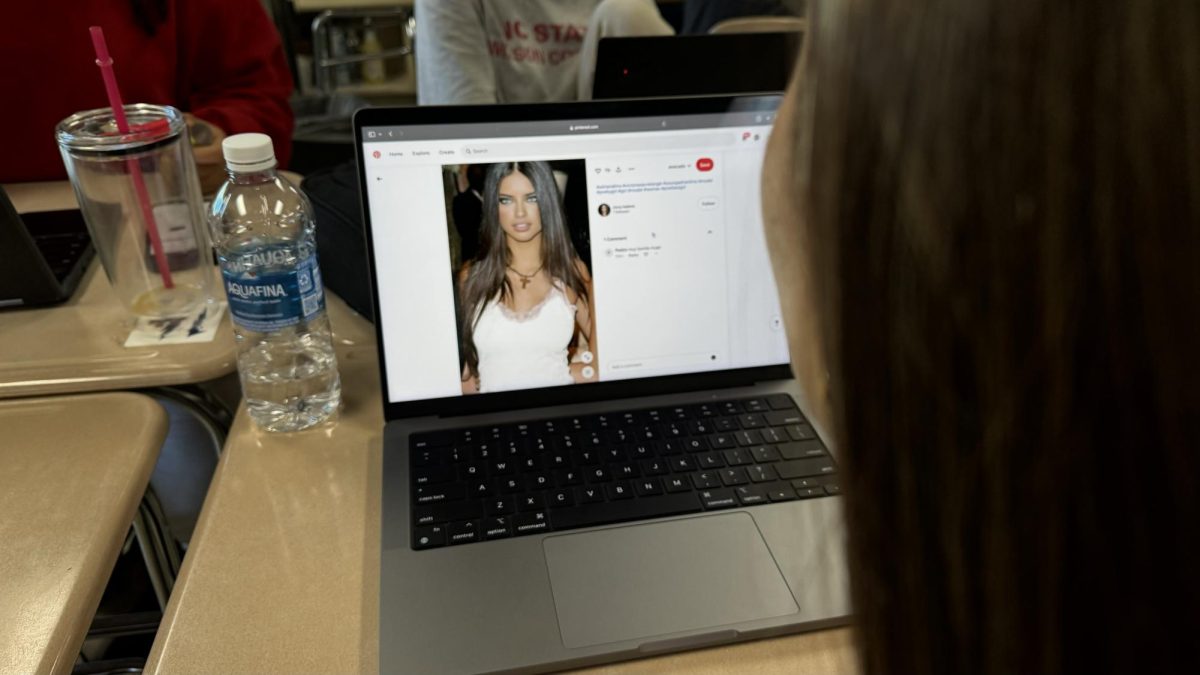Many students don’t want to admit that something they may use everyday is toxic. However, as social media use rapidly increases among younger generations, people are catching up with the negative effects it has on teenagers. Social media is a constant reminder of things you don’t have or don’t look like. According to The University of Maine, around 60% of the world’s population uses social media. Every day billions of people are exposed to pictures and videos of conventionally attractive people, but we don’t think about what that does to us. While you may not be aware of it, we naturally compare ourselves to these people who post only their good photos which are filtered through mass amounts of editing. Social media often causes teenagers negative body image, competition, cyberbullying, derealization and body dysmorphia.
When we go on social media we see ‘perfect people’; needless to say these people are often not real. Face tune is used on many social media models photos. As people scroll through their social media feed, usually their first thought isn’t “oh this is edited” instead, they are flooded with negative thoughts about themselves, instantly comparing themselves to this curated person.
According to the National Institutes of Health (NIH), in 2017 55% of their patients asked to look like a Snapchat filter. In the reconstructive surgery industry people have used the term “Snapchat dysmorphia”, this term is used to describe the people who are in search of plastic surgeons that will make them look like a literal Snapchat filter.
If you look closely at people’s profiles, you will hardly ever see “bad photos” or photos that have “flaws.” This is because people generally don’t post pictures of themselves on their bad days, which comes full circle to people who in the moment don’t look like their best photo. Your everyday appearance may not be what you post on social media; this is a huge issue regarding body dysmorphia. Body Dysmorphia is the constant thought of “flaws” on your body. These “flaws” could be real or imagined. An individual who has body dysmorphia may look at these very unrealistic standards on social media and continue to become more obsessed with their body image.
We often come across videos and pictures that have extremely harsh comments on them. These comments are sometimes because of tiny mistakes, body image, size and appearance. While some people don’t necessarily mean harm by leaving these comments, the person receiving them does not know that.
When scrolling, it is hard to grasp that people that you are watching are real people with real feelings. This is a factor in cyberbullying. While in real life you may experience bullying, it does not compare to the extent of bullying on social media. The detachment from real life while scrolling causes people to lose their sense of humanity.
Although there are drawbacks to social media, there are also benefits from social media regarding body image. Body positivity has become a significant part of social media culture; from ads of body positivity to influencers who don’t necessarily look like society’s beauty standards. Social media has promoted self-love and acceptance, along with promoting good health and well-being. With that being said, negative content is easily remembered rather than positive content, so limiting social media usage will likely decrease stress and anxiety. With limiting social media or screen time, students will become more focused, be able to foster real-life connections, try a new hobby and practice healthy self-care.







